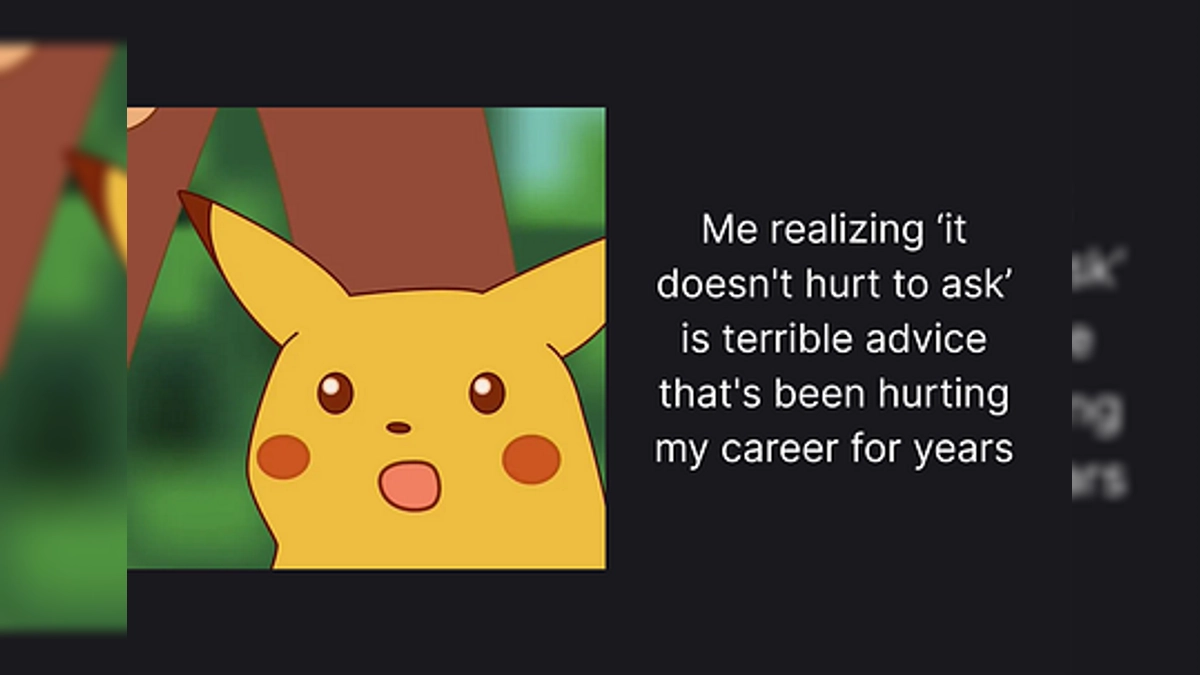Frustrated by rejection? How to plan before you ask
“It doesn’t hurt to ask” is a lie. If you’re going to make an ask, do a bit of strategic thinking upfront.

👋 Hey, it’s Wes. Welcome to my weekly newsletter on managing up, career growth, and standing out as a high-performer.
I originally published this essay in March 2020. Enjoy.
Read time: 4 minutes
Do you hate getting rejected? Of course you do. I hate it too.
Look, we can train ourselves to get comfortable with rejection. But the fact that we need to train ourselves at all is proof that it’s unpleasant.
Of course, being a change agent means trying new things. And when you try new things, not everything will work.
So is rejection something you just have to deal with?
Not necessarily. It’s possible to try new things AND not get rejected as often as you expect.
How? By being strategic about how, when, why, who, and what you ask for.
Here are ways to minimize rejection:
⛑️ Welcome and thanks for being here! If you’re looking for an external perspective, I typically work with tech leaders on: managing up to a CEO/SVP, strengthening your executive communication, and delegating to a team of ICs while raising the bar. If you’re interested in how I can support you, learn more about my coaching approach.
How many times have you heard someone say, “It doesn’t hurt to ask!”
The truth is, it can hurt to ask.
Asking when you shouldn’t is expensive:
Asking can use your social capital.
Asking can make someone question your sense of judgment.
Asking can be off-putting and create awkwardness.
Asking can put a strain on a relationship.
Asking can change the nature of a relationship going forward (and be hard to undo).
You can ask—but don’t just “put it out there” without a strategy. Think about whether what you’re asking a specific person makes sense given your level of trust.

For your audience, the status quo is to do nothing.
If you want them to do something, you should try to stack the odds in your favor. Did you give them enough reasons to say yes? Did you give them any reason to say yes?
These are concrete questions to ask yourself before making any request. The responsibility is on you to give those reasons. Give your idea the fuel it deserves by framing why it benefits the other person, and selling the upside.
If it feels like something the person will regret saying yes to… they won’t say yes. Show them why they will be glad to help you.
Most funnels look like a cone: there’s a wide top-of-funnel that gets narrower, like those disposable paper cone cups you get at your chiropractor’s office. I believe “funnels” should be cones that look more like cylinders.
I believe this is a better way to think about when and how to ask.
For example, if you think, “I need to ask a lot of people, and I’ll get rejected 99% of the time.” Then you’re going to behave accordingly:
You’re going to ask a bunch of people who may or may not be a fit. You’re going to put as little effort as possible into each attempt. And you’ll expect to get rejected by most of them.
Instead, imagine your funnel as more of a cylinder. You’ll think, “I’m going to ask people who I think have a reason to say yes.”
You might still get rejected, but you’re doing your part to increase the likelihood that you get the outcome you’re aiming for.
Ah, yes. This is the mantra that keeps on giving.
Before I mention an idea, I always ask myself, “How can I make this less about me? How can I make this more about the other person?”
If your message is too long, you can usually find places to trim by doing this exercise.
Ask yourself:
“Do I need to share these details?”
“What do I expect the person to do with this information?”
“How can I frame this with the other person in mind?”
You almost always have room to make it less about you. And when you do that, you’re more likely to get a positive result.
What’s something you want to ask for in the near future? How will you reflect on the questions above to increase the chances of achieving your ideal outcome? Hit reply because I’d love to hear from you.
Thanks for being here, and I’ll see you next Wednesday at 8am ET.
Wes
PS Here are more ways to connect:
Follow me on Twitter or LinkedIn for insights during the week (free).
Check my availability to do a keynote for your team.
Learn more about 1:1 executive coaching. My clients include director- and VP-level operators at companies funded by Sequoia, Accel, Kleiner Perkins, etc.
Sell your ideas, manage up, and increase your impact in my 2-day intensive course. The December cohort is almost full—and includes operators from Uber, Salesforce, Waymo, Google, Twilio, Credit Karma, Walmart, Pinterest, Meta, Grammarly, and more. This is the last chance to take the course in 2024. → Save your spot: Executive Communication & Influence for Senior ICs and Managers
Subscribe to Wes Kao's Newsletter
A weekly newsletter on managing up, career growth, and standing out as a high-performer. Written by an a16z-backed founder.
